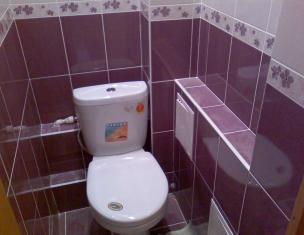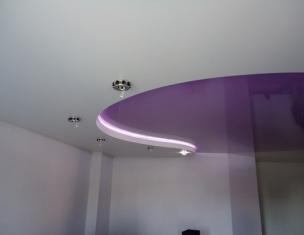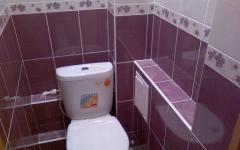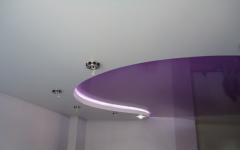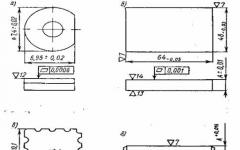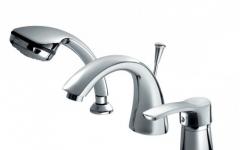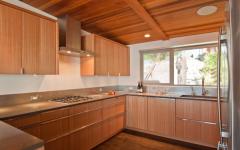From the author: hello dear readers. If you are reading these lines, it means that you have decided to find out everything about the replacement of floors in an apartment. Only here you will find a complete set of information from the primary source, namely, from the best professionals in this field of repair.
What are the floors, and why change them?
We all want our apartments to be warm and comfortable. To do this, we make expensive repairs and spend a lot of time. But we will not achieve the desired result if we replace windows, doors, level the walls, and leave the floors as they are. Therefore, we set ourselves the goal of replacing the flooring ourselves.
Floors must be changed if you are not satisfied with the quality of the coating, its evenness, thermal characteristics, or if it is completely worn out. You should also think about repairing the coating if you have had it since the installation of the building, and you decide to lay linoleum, laminate or parquet board with high quality (then it would be best to lay the finish coating on plywood).
In order for you to have an idea of what they are, we will describe the most common types that are used in apartments. Floors are divided into draft and finishing.
Draft floor
A surface made and laid on floor slabs or on wood to create a base level layer for laying a finished floor. Draft floors are divided into:
- plank on logs - an old wooden floor, which is processed by a special jointer. Or a new construction is made from a log, boards are laid on it and again processed by a planer;
- plywood on logs - the old log design is restored, or a new one is laid, and sheets of plywood are laid on top of it;
- chipboard, chipboard on logs - the same as in the case of plywood;
- OSB boards on logs - the same as in the case of plywood;
- concrete screed - the old concrete coating is knocked down, and a new, perfectly even cement screed is poured onto the prepared surface with or without an insulating pad;
- self-leveling floor - a special solution is poured onto the old cement screed, which is sold in dry form, and which must be made strictly according to the instructions. Suitable for leveling the surface from 5 mm to 20 mm, no more;
- dry screed - an old concrete screed is knocked down, beacons are laid on the prepared surface and quartz or other sand is poured out, leveled over the beacons, and a rough flooring is laid on top of it;
- warm floor - pouring a concrete base or dry screed, laying water or electric heating elements, again a regular or dry screed. Not cheap in execution and maintenance, but very comfortable.

Finished floor
This is the finishing material that we will move on - most often, a thin coating that is quickly applied. The following coatings are commonly found on the market:
- linoleum is a rolled, porous rubberized coating, which has a substrate with various properties at its base. It is used for laying on a variety of coatings and has a low price;
- laminate is visually a wooden coating, but at its base it has a fiberboard - a fiberboard glued from below with glassine for waterproofing, and treated with a special armor layer resembling wood on top. Afraid of water, short-lived, relatively inexpensive;
- parquet is an extremely expensive material made from precious woods. Most often, it has a multi-layer structure, at the base - a cheaper tree, the last layer, the rear - only precious rocks that are resistant to mechanical wear and have a very beautiful appearance;
- edged polished board - boards of a certain durable breed, require piece fitting, after installation they are processed and covered with a special coating, the final result is expensive;
- Fiberboard - the most budgetary material, spreads with the expectation of further painting, is not used without paint treatment;
- - an almost eternal coating with excellent water-repellent properties and an aesthetically beautiful appearance, excellent in all respects, with the exception of one huge minus - it is very cold.

It is very easy to do the work with your own hands. Unless some of the coatings require a specialized tool, but in modern markets and Internet resources you can find any technique and tool you are interested in and rent it at very affordable prices.
Any repair always requires careful study. Plan everything down to the smallest detail. Think over each aspect, calculate the amount of money you need and add another 30% of it - this will be the approximate final amount that you should count on.

When choosing and making a floor, keep the following in mind:
- when pouring a new screed, always knock down the old one;
- when pouring floors, use a damper tape;
- always use waterproofing;
- when buying cement or special mixtures, always look at the expiration date;
- it is better to replace ordinary rolled, perforated beacons with a wide profile for plasterboard structures;
- remember about the load on the surface, and if it is large, for example, more than 300 kg / m 2, discard the dry screed;
- if possible, always insulate your floor if it is a screed. Use expanded clay if it is lags - foam plastic is better, but mineral wool is also suitable;
- remember about air circulation in wooden floors and make a gap between the insulation and the rough coating, as well as ventilation "drawbars";
- use the levels, but it's better to rent a laser one - it will work out its money;
- mix cement mortar only with cold water;
- if possible, add a plasticizer - if there is none, add a little shampoo;
- when making a screed, always lay reinforcement or use basalt fiber;
- if a screed is required that will be used as a ceiling, and there will be heavy loads on it, make a stressed concrete structure;
- always keep the drying time of surfaces and materials;
- when installing tiles, use only waterproofing adhesive, for example, ceresite and do not forget to grout the seams;
You can calculate the amount of grout needed: - use only serviceable tools and machines with all protective covers.

To do the work yourself, you will need the following tool:
- hammer;
- chisel or chisel;
- mallet;
- construction knife;
- plane;
- Master OK;
- concrete mixer or mixing container with a shovel;
- perforator, jackhammer or crowbar;
- level, hydraulic level or laser level;
- tape measure and square;
- screwdriver;
- axe;
- needle roller for smoothing the screed and removing air bubbles.
You won't need all this tool to get the job done, everything will depend on the coverage you choose. Yes, it is too expensive and unprofitable to purchase it for the sake of one repair, but renting a concrete mixer or a chipper is a completely different matter. Well, a hammer with an ax is already present in any home, so dismantling and laying a wooden covering with your own hands will cost you half as much as hiring workers.

Replacement Instructions
Now let's take a closer look at how to mount different types of floors.
Replacing wood floors with concrete
Replacing a wooden pavement with concrete is a very simple operation that does not require skill. It is carried out literally in one full working day by one person, if a concrete mixer is available.
We begin the whole process with the dismantling of the old coating. For this we use scrap. Without sparing the boards and logs, we dismantle and take out of the room. Under the floor, most likely, you will see some kind of insulation. In some houses, this is expanded clay or agloporite, sometimes even broken glass mixed with glass wool comes across.
If you see this, urgently put on a respirator and remove all this garbage. Do not be greedy and try to leave a layer of old insulation. Previously, they did not even think about ecology and used everything indiscriminately. If you need to insulate the overlap, then buy a dozen bags of expanded clay and cover the surface with it.
After dismantling and preparing the surface, we perform waterproofing with bulk mixtures or roofing material. Then we insulate with expanded clay, if required, but it is possible without it, it all depends on whether you want heat loss or not. Next, we lay a waterproofing film on expanded clay and lay a reinforcing mesh, and if we use basalt fiber, then reinforcement is excluded.




